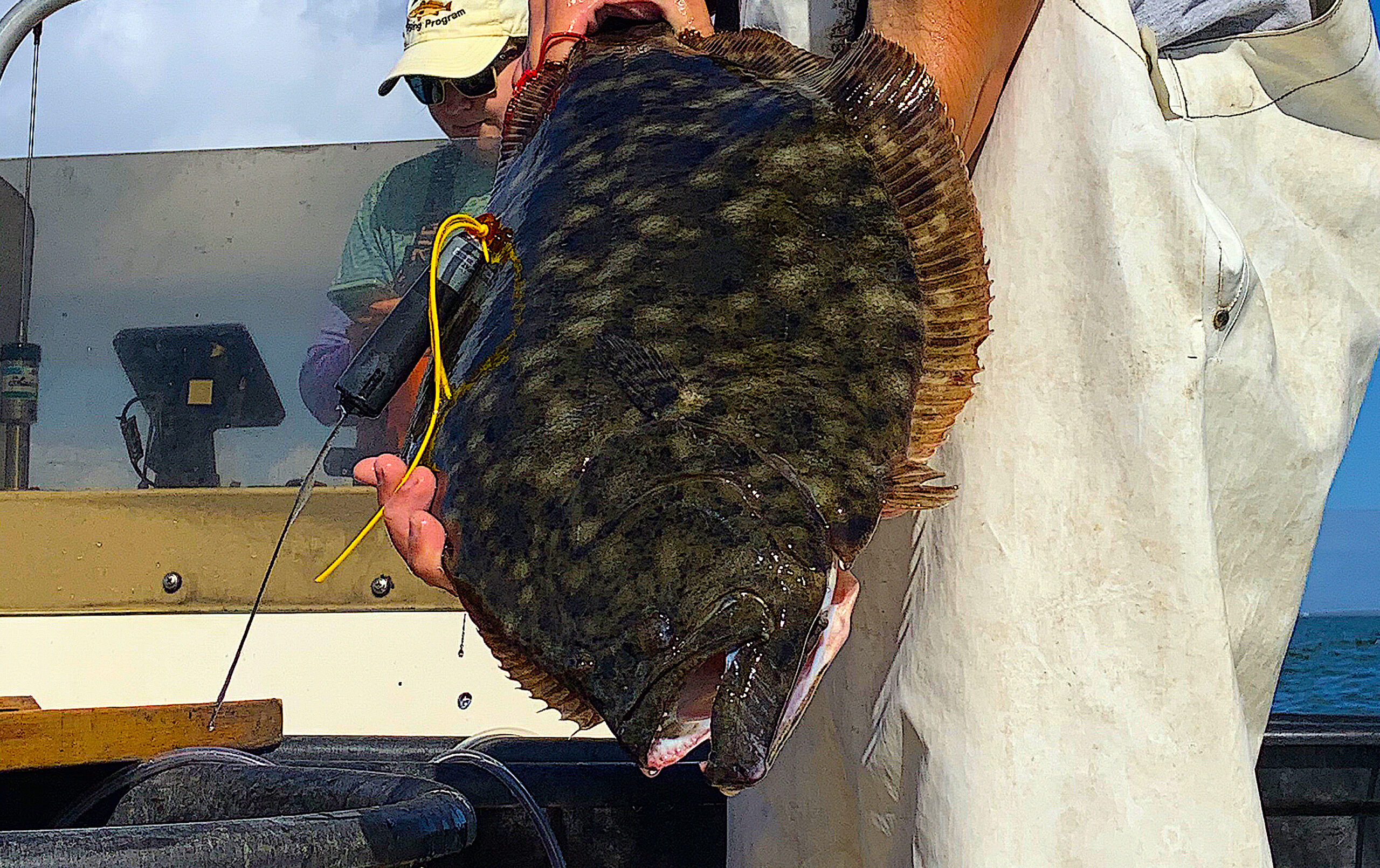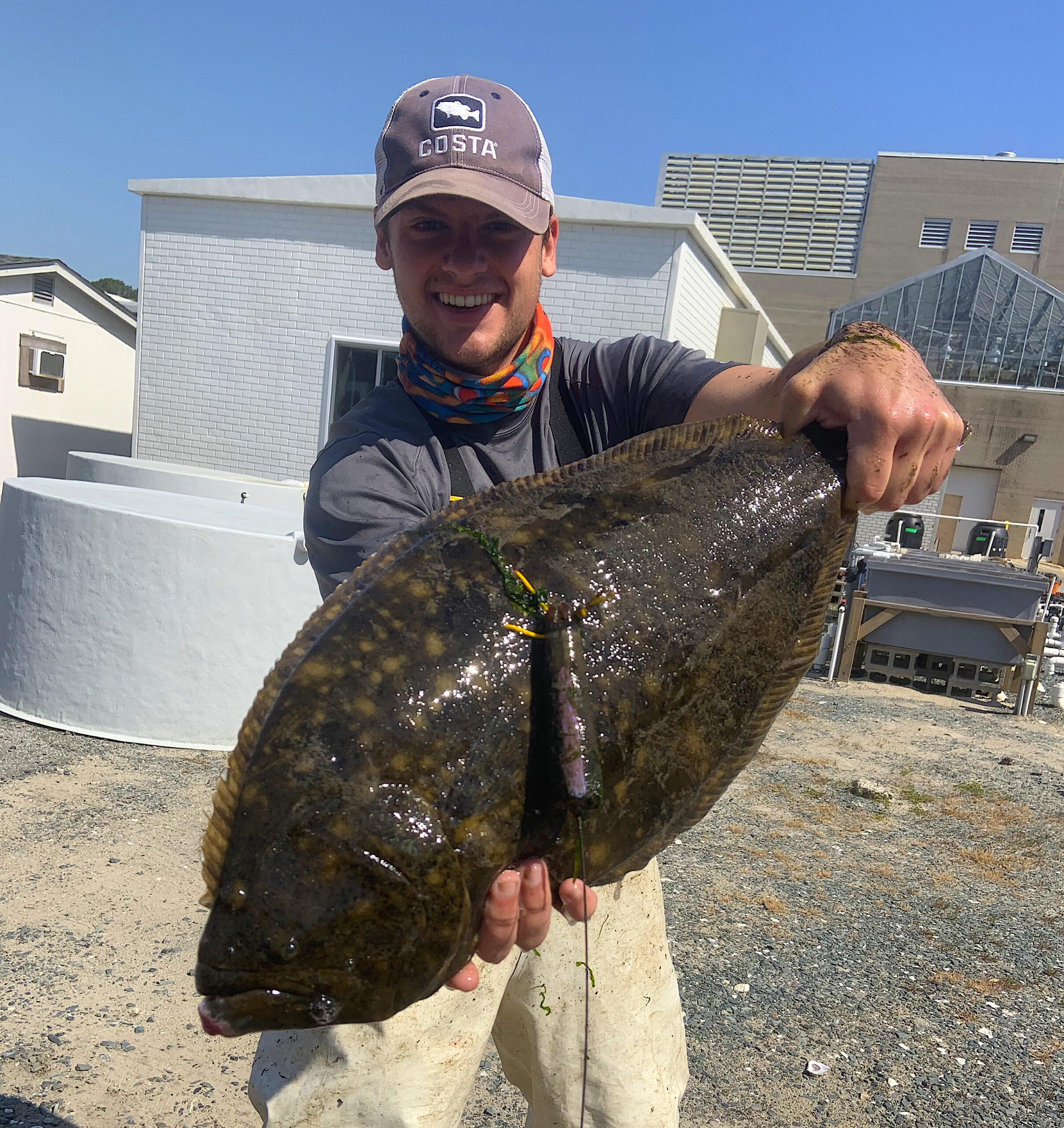Where Do Southern Flounder Go in the Winter?

Southern flounder move offshore to spawn, but their migration patterns might be more mysterious than we thought.
Working with other U.S. South Atlantic states, the N.C. Division of Marine Fisheries recently concluded that not only is the state’s southern flounder population overfished but also that overfishing is still occurring. The poor status of the stock requires considerable reductions in harvest to allow rebuilding.
Determining how much these fish mix across states will help to better understand the impacts of present and future fishing practices, informing strategies to rebuild and sustain the stock.
Research Need
Adult southern flounder leave estuaries for the ocean during the fall and spend the winter in offshore habitats, where they presumably spawn. As waters warm in spring, flounder return to coastal and estuarine habitats, but conventional tagging data has shown that their return locations often are hundreds of miles away from their original tagging sites.
More recent studies of flounder genetics and chemical tracers indicate a well-connected flounder population throughout the South Atlantic. But how does this happen? Are flounder from Florida estuaries spawning in the same offshore locations as fish from North Carolina? Or are flounder merely wandering back inshore in different states?
What did we study?
We used pop-up satellite tags to estimate the offshore locations of southern flounder during the winter. In fall of 2020, we cooperated with fishermen to tag 100 fish captured at several inshore sites close to ocean inlets along the North Carolina coast.
We programmed the tags to pop off the fish on specific dates between mid-January and mid-March to cover most of the winter spawning period. Upon release, the tags floated to the surface and transmitted their locations via satellite.
What did we find?
Most southern flounder left the estuaries and went to the ocean. However, some fish remained in the estuary or stayed very close to the ocean shoreline. The absence of offshore movements by these fish could be related to stress from capture and tagging or could mean that individual southern flounder may not spawn every year.
The offshore movements of southern flounder were not as extensive as we expected, with many fish still using nearshore habitats during the winter. We did observe some fish near the outer edge of the shelf, in deeper waters, where past egg and larval collections suggest that spawning occurs. However, the offshore movements were generally straight off the North Carolina coast, as opposed to southward migrations that we expected, based on past tagging studies.
Results are still preliminary, with additional tagging planned for 2021 and 2022, but the early returns reveal a different picture of where southern flounder travel during the winter.
UNCW and the N.C. Division of Marine Fisheries are conducting this project collaboratively. It will form the basis of the master’s thesis for Mason Collins at UNC Wilmington. The North Carolina Coastal Recreational Fishing License Fund is supporting the study.

By Mason Collins, a graduate student in marine biology at UNCW. While studying wildlife and fisheries biology as an undergraduate at Clemson University, he worked on several projects, including investigating southern flounder populations in Alabama and stoplight parrotfish territoriality in the Florida Keys. He also has worked for the South Carolina Department of Natural Resources, as well as for the U.S. Forest Service in Alaska as a fisheries technician.
The text from Hook, Line & Science is available to reprint and republish at no cost but only in its entirety and with this attribution: Hook, Line & Science, courtesy of Scott Baker and Sara Mirabilio, North Carolina Sea Grant. HookLineScience.com
- Categories:



